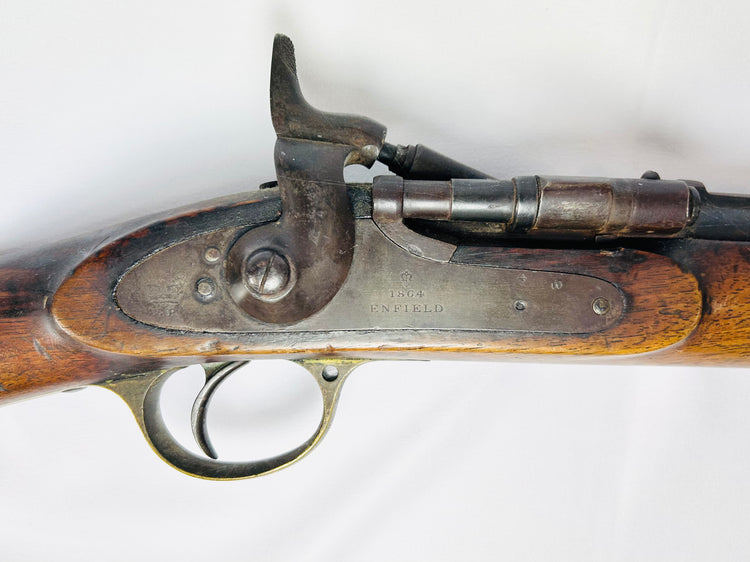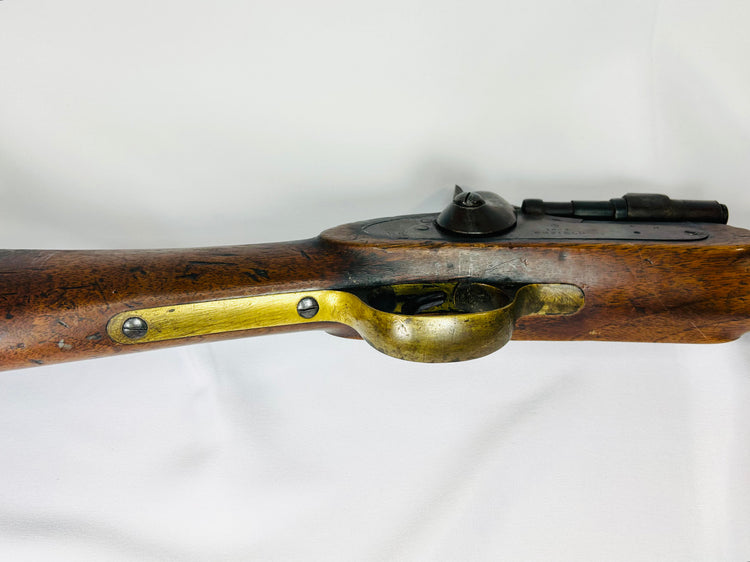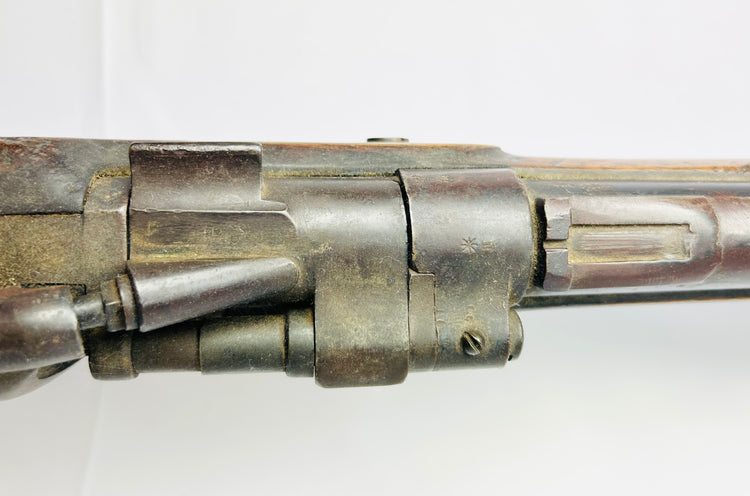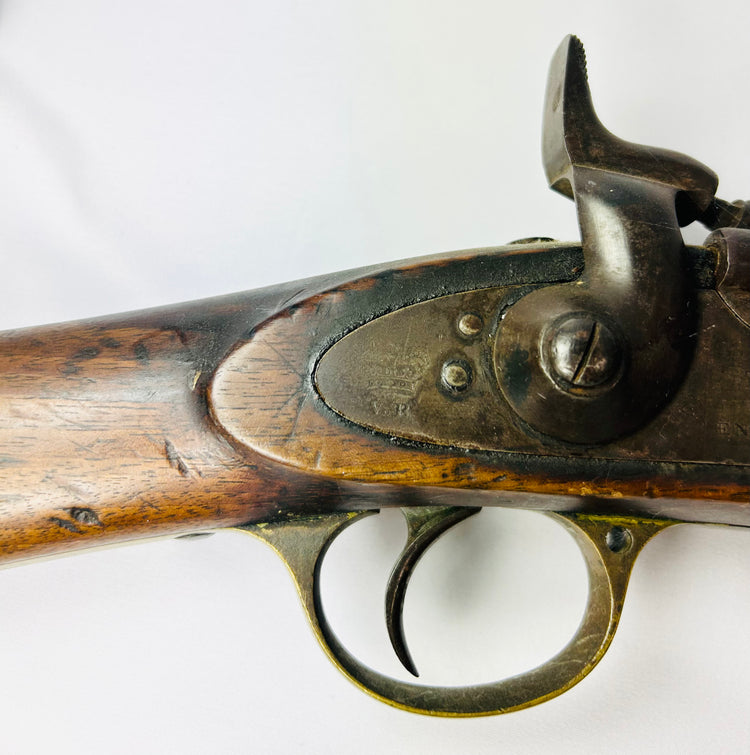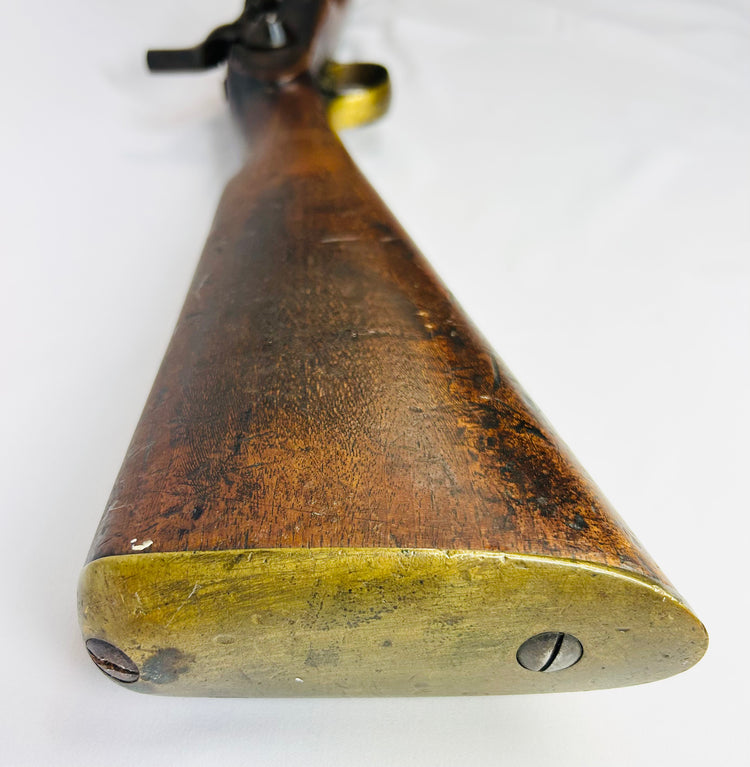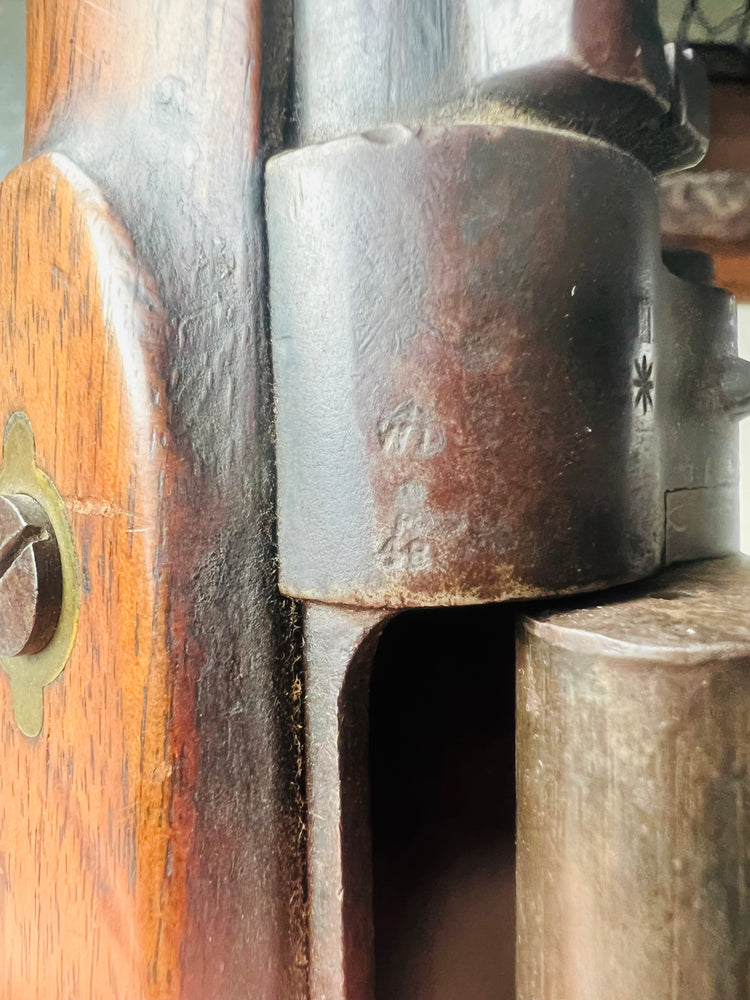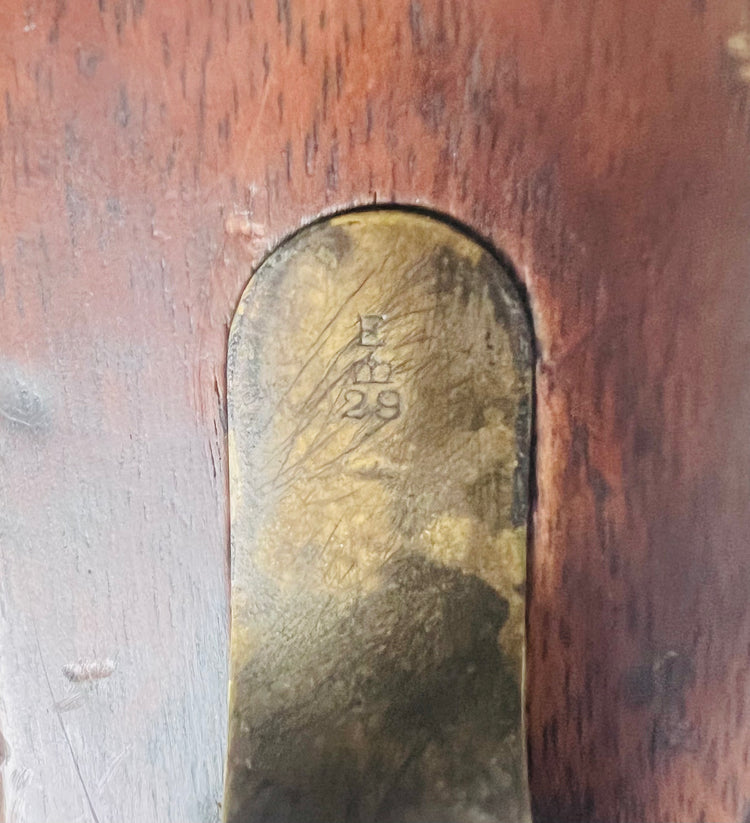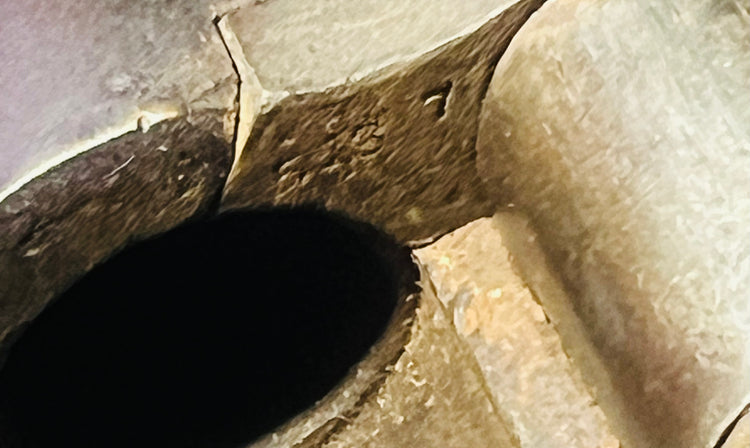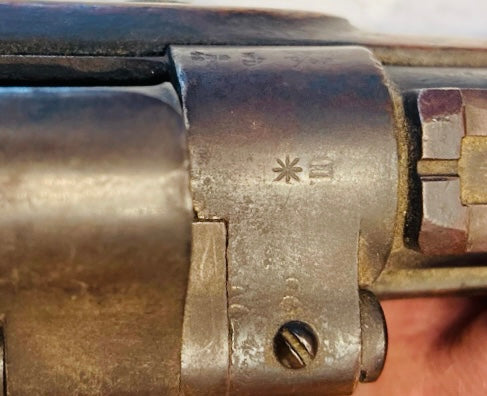Victorian-Era Enfield Snider Conversion | Queen's Cipher Marked Service Rifle | 1864
Description
More
Less
Historical Context & Origin
Region: United Kingdom
Material: Steel, brass, and walnut wood
Period: Mid-19th Century (Dated 1864)
Description
A fine British military firearm of the Victorian era, this Snider-Enfield Pattern 1853 Mark II Service Rifle illustrates the critical transition from muzzle-loading to breech-loading systems. Originally a percussion cap musket, it was converted in the early 1860s under Jacob Snider’s patented mechanism, later officially adopted by the British Army in 1866.
The lockplate is crisply stamped “ENFIELD 1864” beneath Queen Victoria’s crown and cypher (“VR”), with additional military inspection and proof marks throughout the steel fittings. The rifle features the hinged breechblock system characteristic of the Mk II conversions, along with its original brass trigger guard and butt plate. The walnut stock bears the warm, worn patina of active service, showing clear signs of field use.
Features
- Stamped with Queen Victoria’s royal cypher (“VR” beneath crown) and dated 1864
- “ENFIELD” arsenal marking, confirming Royal Small Arms Factory production
- Converted to breech-loading using the Snider Mk II mechanism
- Brass hardware: trigger guard and butt plate
- Walnut stock with period wear and patina
- Military proof and inspection stamps visible throughout
Cultural Significance
The Snider-Enfield was the first breech-loading rifle to be widely adopted by British and colonial forces. Its conversion design extended the life of the Pattern 1853 Enfield muskets while introducing cartridge-based firepower, representing a pivotal moment in the modernization of global military technology. Rifles of this type saw extensive service across the Empire in campaigns of the mid-to-late 19th century.
Condition
Good overall antique condition. The steelwork shows patina and surface wear consistent with age. The walnut stock has been shortened, likely for cavalry or colonial field use, with handling marks and scratches throughout. The breech system remains intact and functional, though the firearm is offered strictly as a non-firing historical collectible.
Dimensions (approximate)
Overall length: 46.25 in
Age
Dated 1864, Snider-Enfield Mk II conversion
Learn More
Deepen your understanding of the Snider-Enfield system and its pivotal role in the evolution of 19th-century military firearms: Snider-Enfield Breechloader – National Museum of American History
Explore more collectible firearms, military rifles, and historic weaponry from across eras in our curated collection: Collectible Firearms & Historical Weaponry – Relic And Rarity
Description
Historical Context & Origin
Region: United Kingdom
Material: Steel, brass, and walnut wood
Period: Mid-19th Century (Dated 1864)
Description
A fine British military firearm of the Victorian era, this Snider-Enfield Pattern 1853 Mark II Service Rifle illustrates the critical transition from muzzle-loading to breech-loading systems. Originally a percussion cap musket, it was converted in the early 1860s under Jacob Snider’s patented mechanism, later officially adopted by the British Army in 1866.
The lockplate is crisply stamped “ENFIELD 1864” beneath Queen Victoria’s crown and cypher (“VR”), with additional military inspection and proof marks throughout the steel fittings. The rifle features the hinged breechblock system characteristic of the Mk II conversions, along with its original brass trigger guard and butt plate. The walnut stock bears the warm, worn patina of active service, showing clear signs of field use.
Features
- Stamped with Queen Victoria’s royal cypher (“VR” beneath crown) and dated 1864
- “ENFIELD” arsenal marking, confirming Royal Small Arms Factory production
- Converted to breech-loading using the Snider Mk II mechanism
- Brass hardware: trigger guard and butt plate
- Walnut stock with period wear and patina
- Military proof and inspection stamps visible throughout
Cultural Significance
The Snider-Enfield was the first breech-loading rifle to be widely adopted by British and colonial forces. Its conversion design extended the life of the Pattern 1853 Enfield muskets while introducing cartridge-based firepower, representing a pivotal moment in the modernization of global military technology. Rifles of this type saw extensive service across the Empire in campaigns of the mid-to-late 19th century.
Condition
Good overall antique condition. The steelwork shows patina and surface wear consistent with age. The walnut stock has been shortened, likely for cavalry or colonial field use, with handling marks and scratches throughout. The breech system remains intact and functional, though the firearm is offered strictly as a non-firing historical collectible.
Dimensions (approximate)
Overall length: 46.25 in
Age
Dated 1864, Snider-Enfield Mk II conversion
Learn More
Deepen your understanding of the Snider-Enfield system and its pivotal role in the evolution of 19th-century military firearms: Snider-Enfield Breechloader – National Museum of American History
Explore more collectible firearms, military rifles, and historic weaponry from across eras in our curated collection: Collectible Firearms & Historical Weaponry – Relic And Rarity
You May Also Like





































